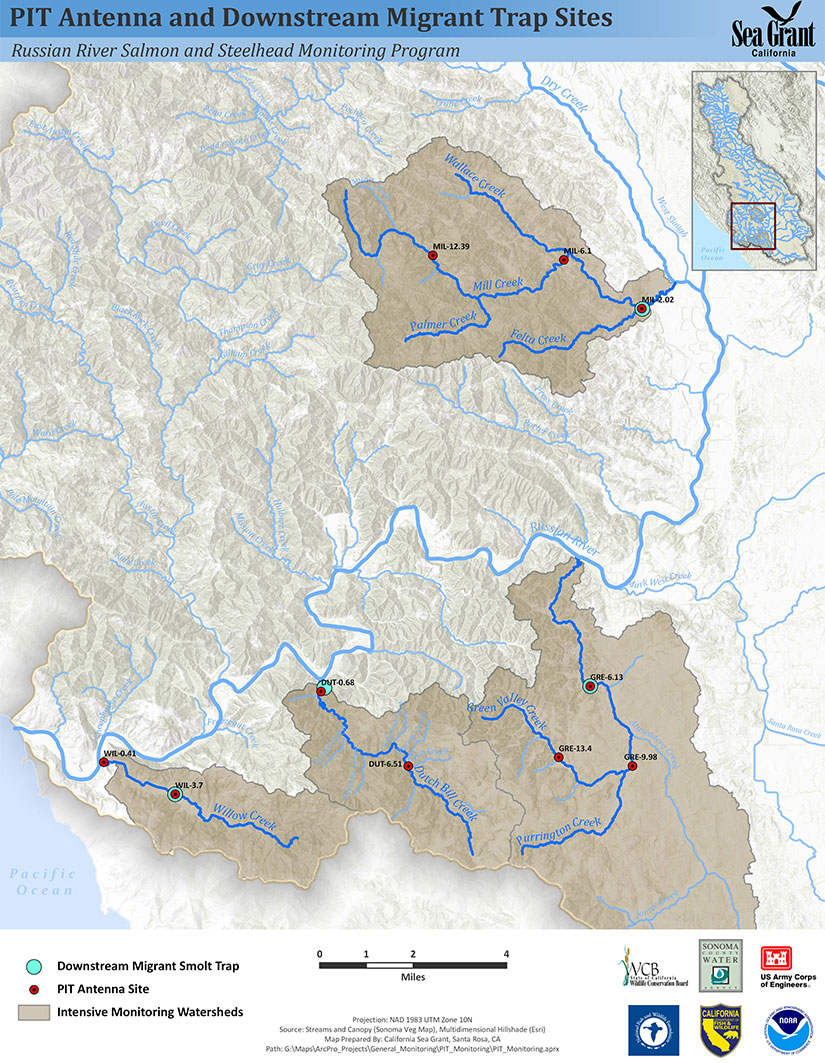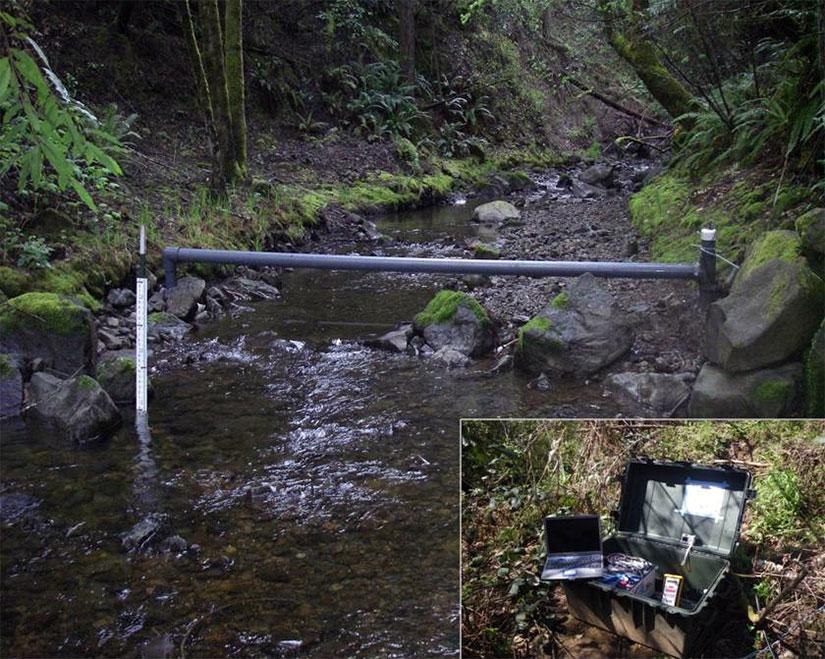Breadcrumb
- Russian River Salmon and Steelhead Monitoring Program
- Fish Monitoring
- PIT-Tag Monitoring
PIT-Tag Monitoring
As an alternative to conventional monitoring methods, biologists use tiny devices called Passive Integrated Transponders, or PIT, tags to identify and track individual coho salmon from their release as juveniles to their return as adults. Prior to being released into streams, young coho are weighed, measured and PIT tagged by our Army Corps of Engineers partners at the Don Clausen Fish Hatchery at Warm Springs Dam. Information about each fish, including age, size at release, and release stream and season, is recorded in association with their unique tag number. When a tagged fish passes by a transceiver's electrical field, the tag number and time are recorded on a reader in a weatherproof box on the adjacent stream bank.
Juvenile fish are scanned for tags during summer electrofishing and spring smolt trapping efforts. Tags are also applied to a subset of wild fish. When smolts move downstream to the estuary and ocean in the spring, they pass through channel-spanning PIT-tag antennas. When they swim upstream to their spawning grounds as adults approximately 1.5 years later, these same antennas detect tagged fish. Using the ratio of tagged to untagged coho salmon for each hatchery release group, we can calculate an estimated count that represents the actual adult population size.

PIT-tag antennas are operated on several high-priority coho streams and the lower Russian River. PIT-tag technology generates invaluable data to support coho salmon abundance, survival and growth estimates, while reducing the impact caused to fish by conventional monitoring techniques. In addition, it is helping us to gain a much better understanding of both coho and steelhead movement patterns at all life stages, which can also be evaluated in relation to environmental conditions to answer important questions.


